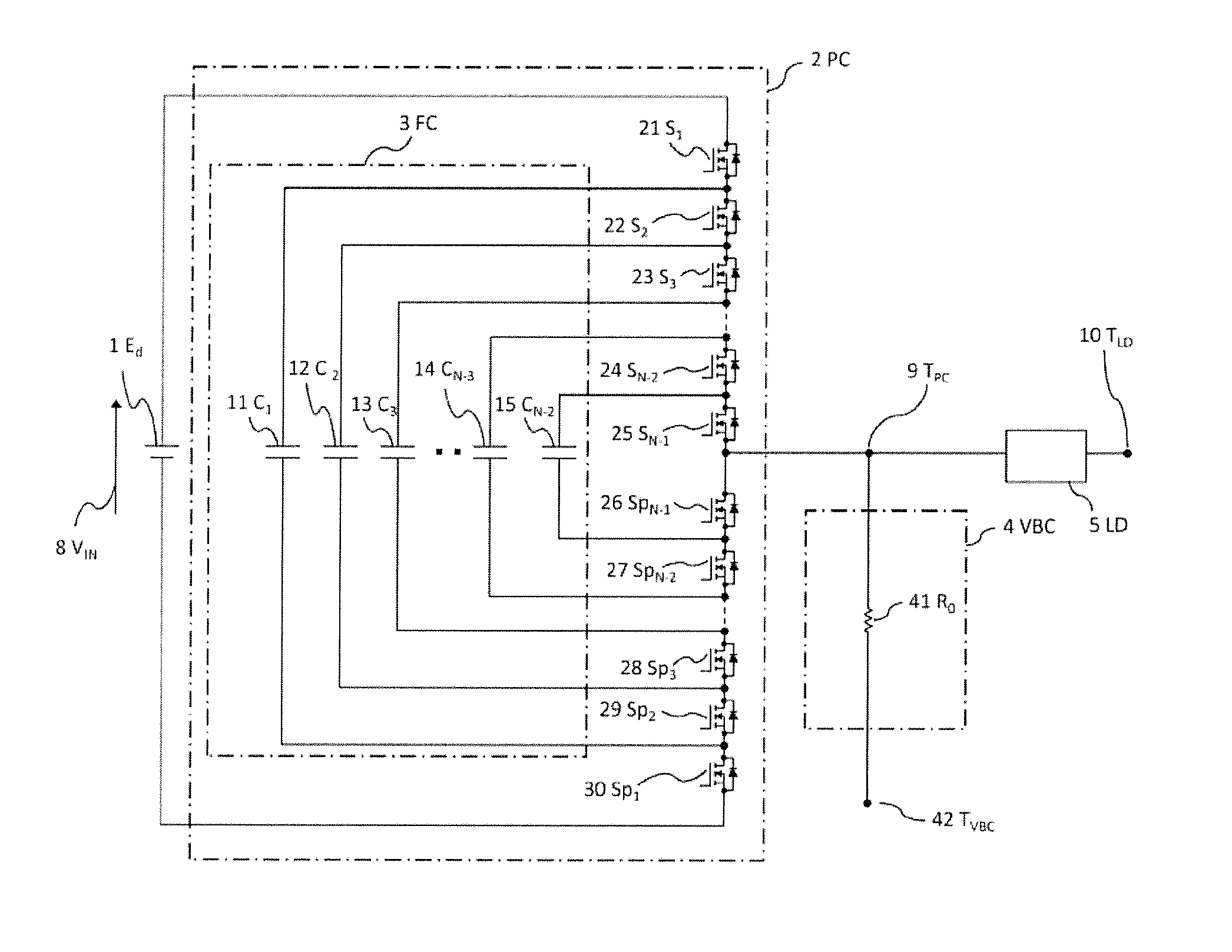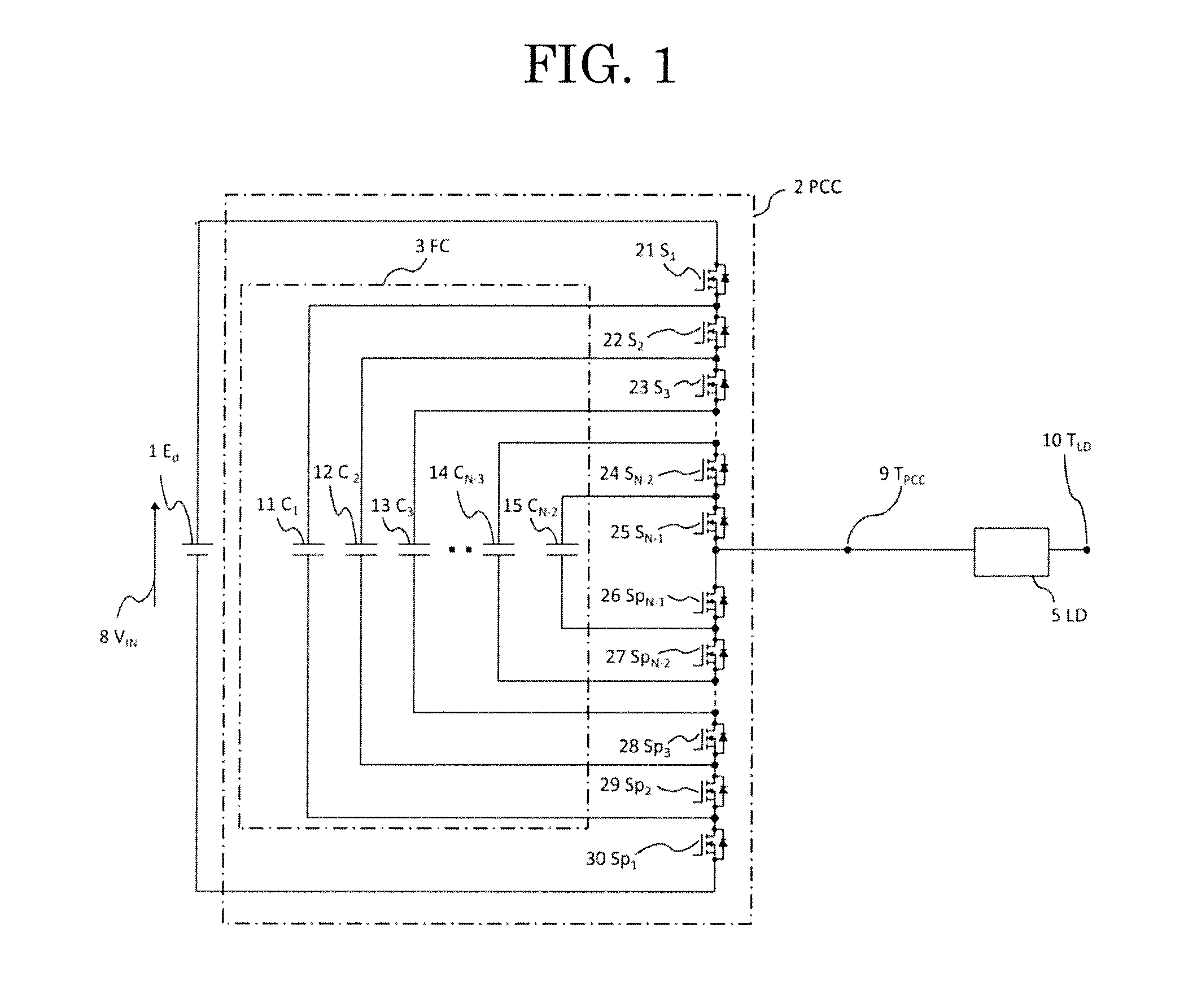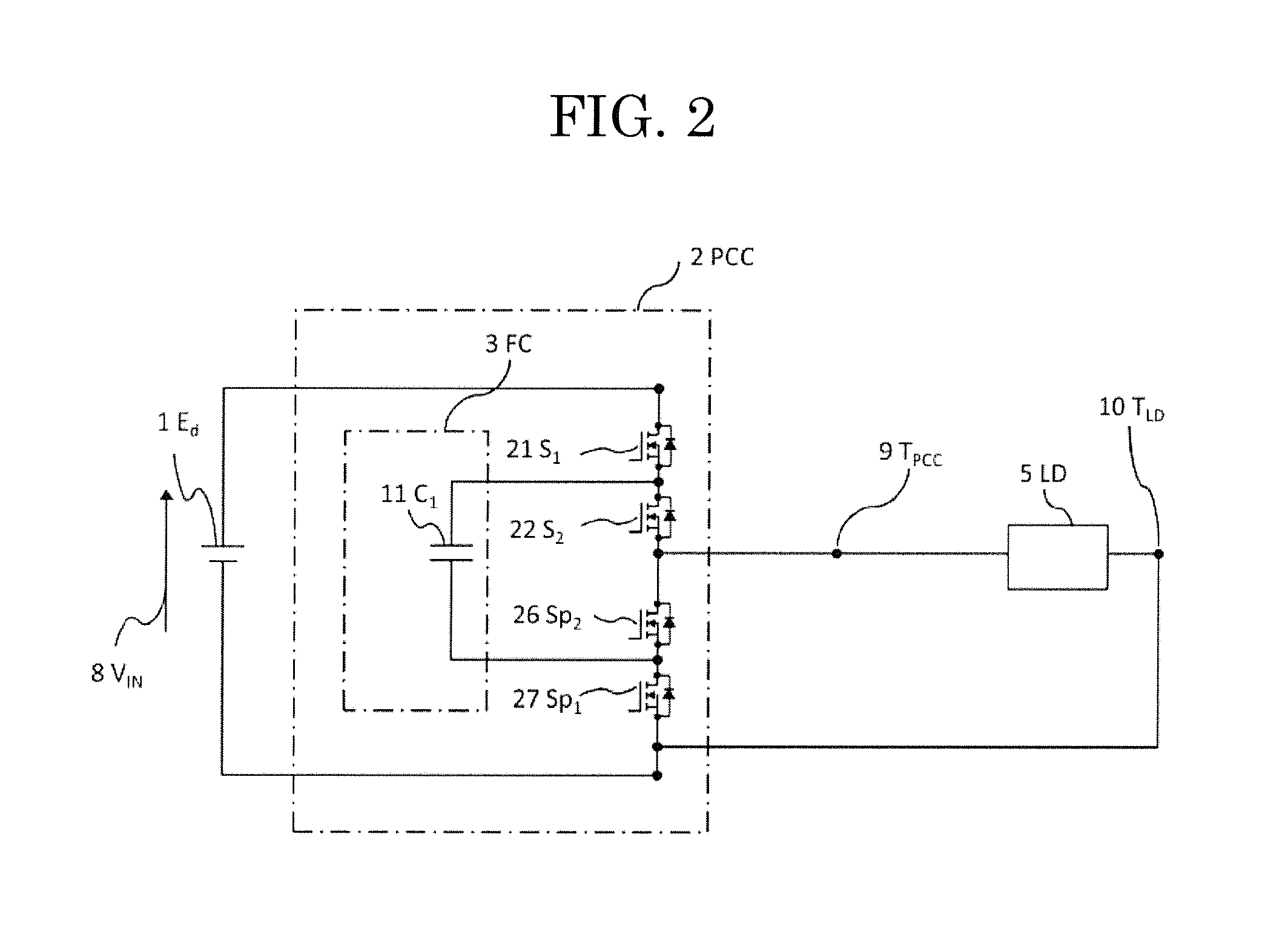Multilevel Power Conversion Circuit and Device
a power conversion circuit and multi-level technology, applied in power conversion systems, ac-dc conversion without reversal, electrical equipment, etc., can solve the problems of limiting the degree to which efficiency can be improved, high switching loss, and large electromagnetic noise generated upon switching, so as to reduce loss, noise, production cost, and device size , the effect of improving reliability
- Summary
- Abstract
- Description
- Claims
- Application Information
AI Technical Summary
Benefits of technology
Problems solved by technology
Method used
Image
Examples
example 1
[0153]The effect of the present invention in the circuit configuration of FIG. 6 was verified based on a virtual experiment by simulation. A circuit used was a flying capacitor circuit-type multilevel power conversion circuit in a five-level DC-AC power conversion device. A circuit configuration of FIG. 1 was used as a circuit configuration of a conventional art. A circuit configuration of FIG. 6 was used as a circuit configuration of the present invention. Because the device was five-level, N was 5, three flying capacitors were involved, namely C1, C2, and C3, and eight main semiconductor switches were involved, namely S1, S2, S3, S4, SP1, SP2, Sp3, and Sp4.
[0154]As calculation conditions, an input voltage was 200 V, the capacitance of the flying capacitors was 10 μF, a load was a serial circuit of a resistor having a resistance value of 30Ω and an inductor having an inductance of 80 mH, the frequency of the fundamental wave of an output was 50 Hz, a carrier frequency was 2 kHz (a ...
example 2
[0159]The effect of the present invention in the circuit configuration of FIG. 17 was verified based on a virtual experiment by simulation. A circuit used was a flying capacitor circuit-type multilevel power conversion circuit in a five-level DC-AC power conversion device. A circuit configuration of FIG. 1 was used as a circuit configuration of a conventional art. A circuit configuration of FIG. 17 was used as a circuit configuration of the present invention. Because the device was five-level, N was 5, three flying capacitors were involved, namely C1, C2, and C3, and eight main semiconductor switches were involved, namely S1, S2, S3, S4, Sp1, Sp2, Sp3, and Sp4.
[0160]As calculation conditions, an input voltage was 200 V, the capacitance of the flying capacitors was 10 μF, a load was a serial circuit of a resistor having a resistance value of 30Ω and an inductor having an inductance of 80 mH, the frequency of the fundamental wave of an output was 50 Hz, a carrier frequency was 2 kHz (...
example 3
[0165]A prototype of a DC-AC power conversion device was produced, and the effect of the present invention with this device was verified by an experiment. A circuit used was a three-level flying capacitor circuit-type multilevel power conversion circuit. A circuit configuration of FIG. 1 was used as a circuit configuration of a conventional art. A circuit configuration of FIG. 17 was used as a circuit configuration of the present invention. Because the device was three-level, N was 3, only one flying capacitor was involved, namely C1, and four main semiconductor switches were involved, namely S1, S2, Sp1, and Sp2.
[0166]As calculation conditions, an input voltage was 100 V, the capacitance of the flying capacitor was 8.2 μF, a load was a serial circuit of a resistor having a resistance value of 10Ω and an inductor having an inductance of 40 mH, the frequency of the fundamental wave of an output was 50 Hz, and a carrier frequency was 2 kHz. All of the main semiconductor switches were ...
PUM
 Login to View More
Login to View More Abstract
Description
Claims
Application Information
 Login to View More
Login to View More - R&D
- Intellectual Property
- Life Sciences
- Materials
- Tech Scout
- Unparalleled Data Quality
- Higher Quality Content
- 60% Fewer Hallucinations
Browse by: Latest US Patents, China's latest patents, Technical Efficacy Thesaurus, Application Domain, Technology Topic, Popular Technical Reports.
© 2025 PatSnap. All rights reserved.Legal|Privacy policy|Modern Slavery Act Transparency Statement|Sitemap|About US| Contact US: help@patsnap.com



